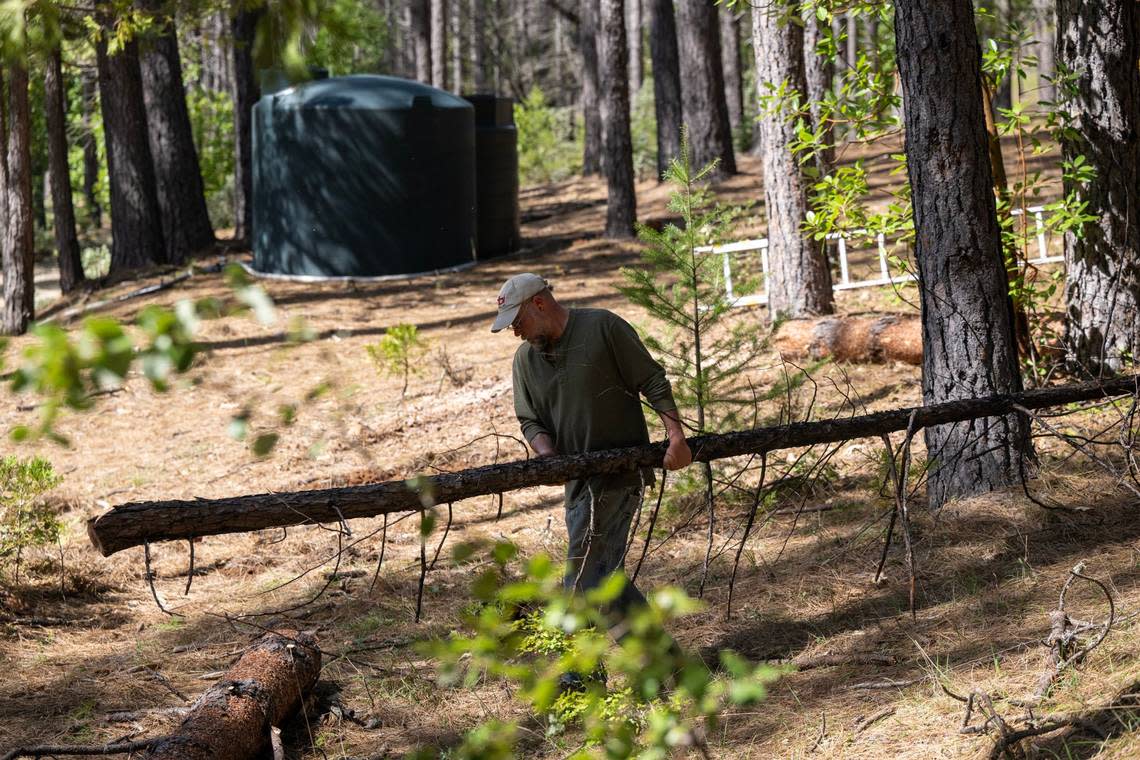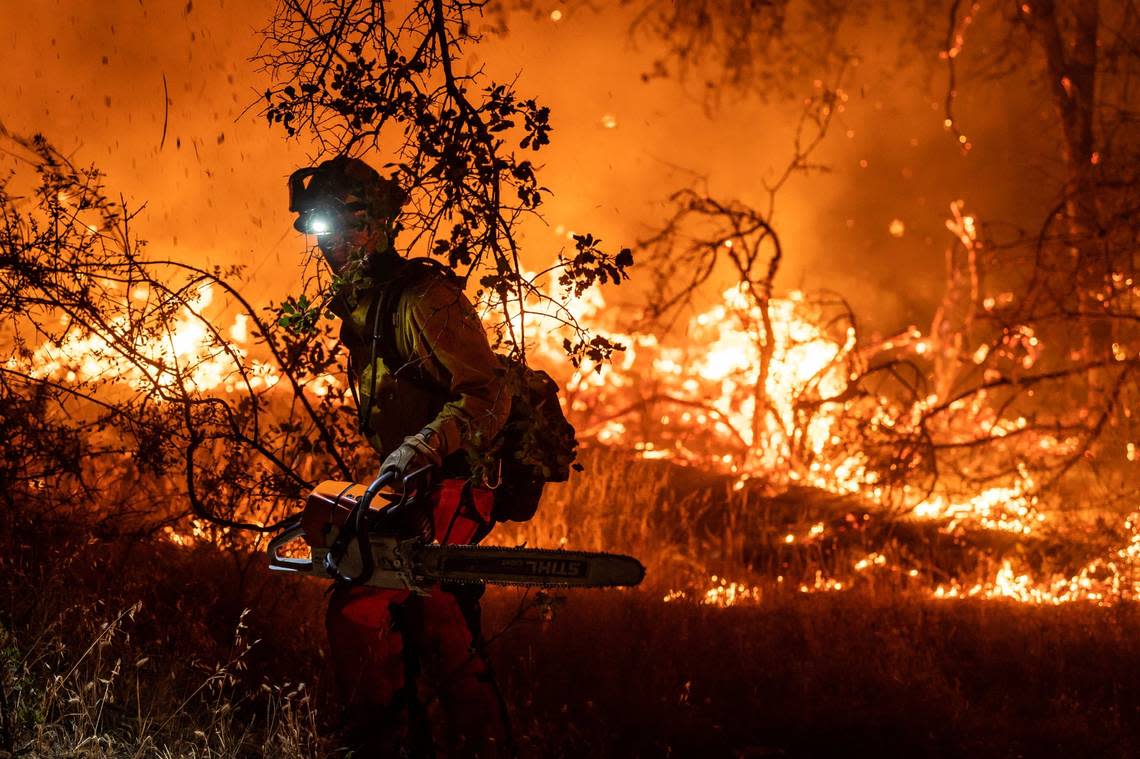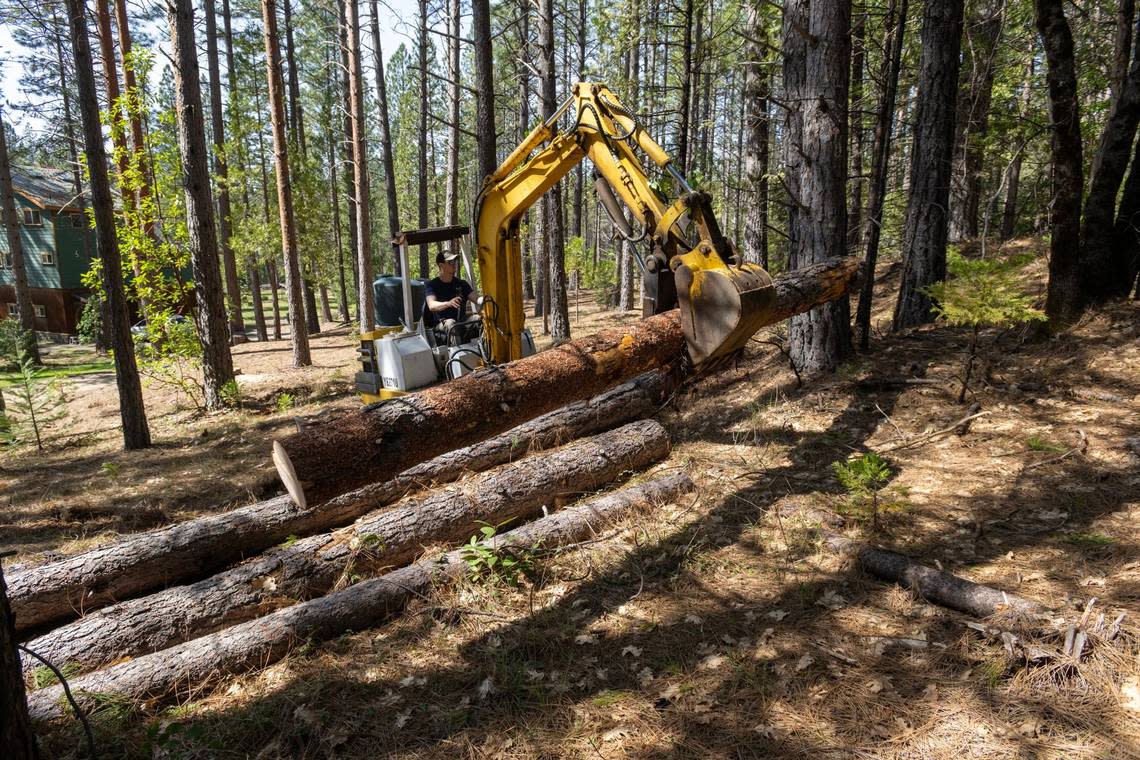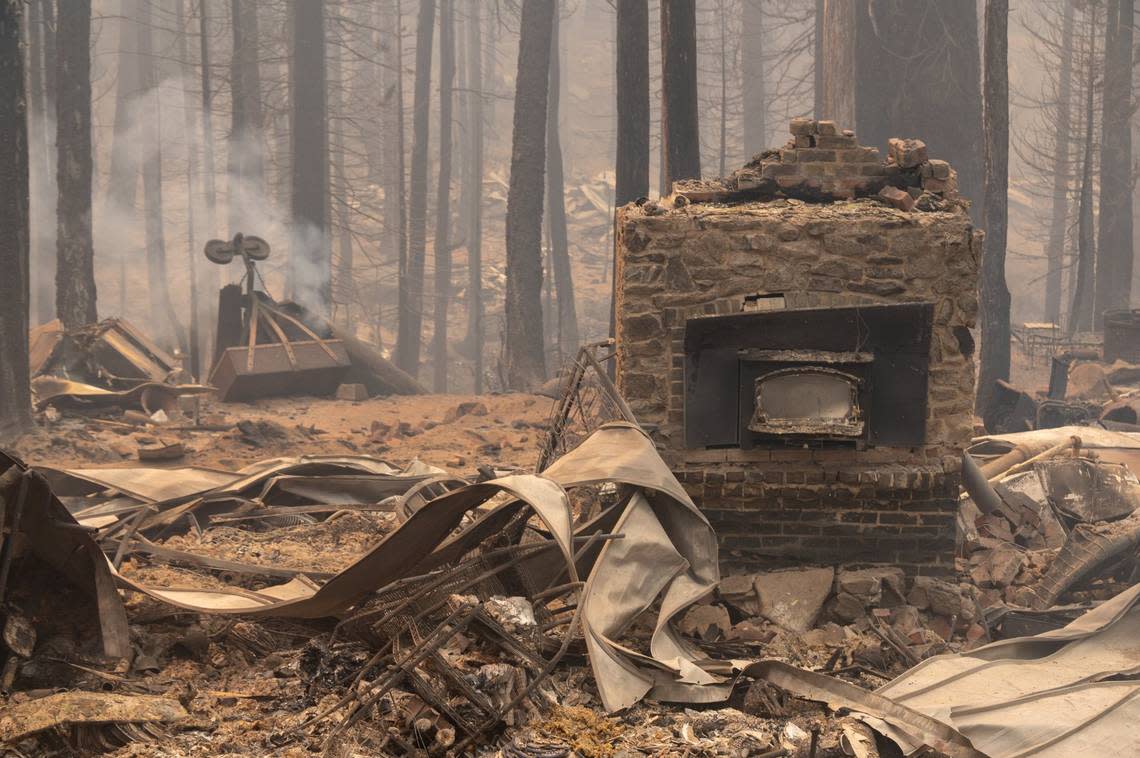California insurers must give discounts for wildfire mitigation. Have homeowners benefited?
In 2022, state Insurance Commissioner Ricardo Lara announced he would force companies to offer discounts to people who take specific steps to protect their homes from wildfires.
It was part of an effort, he said at the time, to “reward the hard work that California consumers do” to make their properties, families and communities safer.
Many homeowners will qualify, but their financial reward? Not much.
A year and a half later, the mandate has not led to significant savings for many Californians or provided a strong cash incentive to do the work, according to records and interviews.
Discounts proposed by some of the largest insurers in the state have yet to go into effect. But based on what companies have put forward, the cost of qualifying for them will dwarf the savings for many homeowners.
“People can spend hundreds or thousands of dollars protecting their homes against wildfires because they were told if they did that they would get lower insurance premiums,” said Harvey Rosenfield, the founder of Consumer Watchdog, an advocacy organization. “But so far, that has turned out to be a ‘heads, insurance companies win, tails, insurance companies lose,’ deal.”
Take Farmers, which was California’s second largest home insurer in 2022, the most recent year available, according to the Department of Insurance.
The company estimated the average policyholder in an area with a high fire risk would save about $42 to $75 a year for taking the specific mitigation steps, according to a document obtained by The Sacramento Bee.
“That’s a drop in the bucket,” said Hans Shillinger, who lives near Nevada City. Shillinger said he pays about $7,200 a year for his home insurance with Farmers.

What’s more, the company wants Shillinger and other policyholders to pay for an inspection to determine what, if any, discounts they are eligible for, another document shows. The company said the evaluations would need to be renewed every three years. It costs $125 to apply for the review.
That means the savings could roughly equal what a homeowner has to pay to even qualify for the discount.
Farmers argued homeowners “must have a vested interest in taking the necessary wildfire mitigation actions for their property,” in a filing with the state.
If the company was to pay for the inspection, it added, people could request one without having actually done the work and hope for the best. “In this scenario, the overall inspection costs could get out of control for an insurer.”
The department told Farmers that it, and not policyholders, should pay for the cost of an inspection used to determine eligibility for the mandatory discounts. The company’s proposal is still under review.
Michael Soller, a department spokesman, said the discounts send a clear message about the need for wildfire safety and provide direction on what steps to take. He encouraged homeowners to check with their insurers to see what they are eligible for.
Beyond paying less, he added, people who protect their homes could be saving their properties and lives during a future fire.

“This is long overdue and this is a really important first step.”
The department plans to track how the discounts are used, he said, and could add additional ones in the future.
“We expect this to have an impact on day one but also for years to come.”
Small discounts, expensive work
The mandate Lara began enforcing in October of 2022 established a list of actions insurers must now honor.
They include community measures, such as joining a group of residents that together take steps to reduce fire risks. And individual ones, such as clearing vegetation from specific areas around a home.
The rules don’t set a minimum price or percentage for what a person can save.

Insurance company representatives say the discount requirement overemphasizes individual mitigation steps. Instead, they argue, homeowners should be rewarded for doing all of them, because that will more effectively protect a home.
In response, major companies have proposed a varied set of discounts, according to records reviewed by The Bee.
State Farm was California’s largest property insurer in 2022. It is planning to offer a 4.2% combined discount for completing 10 separate home and property actions.
That includes 0.1% reductions each for having multi-paned windows and for not having any flammable structures within 30 feet of a home. If a policyholder has a certain roof, they can receive a 2% break — the largest discount for an individual mitigation measure provided by the company, which sells insurance in the state through a subsidiary.
Sevag Sarkissian, a company spokesman, said in an email the new discounts go into effect in September and, in general, apply to a policyholder’s total premium. Homeowners are eligible for greater savings if their properties pass the inspection also mentioned in Farmers’ proposal. State Farm policyholders are expected to pay for the evaluation.
Placerville resident Sue Rodman, 77, has taken steps that appear to qualify her for discounts from the company. She recently spent around $3,000 to have fire-resistant screens added to her home, she said, a measure that could save her 0.1%.
Rodman’s house has been insured by State Farm since 1989 and her policy costs roughly $1,770 a year. That means adding the screens could reduce her bill by less than $2 annually.
That job was on top of roughly $1,000 she pays to clear vegetation and do other mitigation work on her property every year, she said.
To her, it isn’t about saving money. She wants her home to be able to survive a wildfire.
“What they’re offering does not make financial sense,” said Rodman, who raised her deductible to try and keep her rates lower. “The discounts don’t come up to nearly the cost of doing the work.”
Sarkissian responded: “While we hope customers find the new discounts worth the effort, it is important to remember that the most important benefit of meeting the required guidelines is helping our customers prevent or limit damage to their home.”
Shillinger, the Farmers policyholder in Nevada County, hopes his property will also make it through a fire.

On a recent day, he brought down several trees near his home with his brother, son, cousin, nephew and a longtime friend on the 10-acre lot. Over the last 15 years, Shillinger, 60, estimates he’s devoted thousands of hours of manual labor to try and make the property more fire resistant. That includes clearing hundreds of trees.
He loves the solitude and the beauty of his surroundings, but also recognizes it comes with an increased risk. He believes he would qualify for discounts from Farmers, once they are approved, and has taken other measures to try and protect his home: adding sprinklers to his roof and two 2,600-gallon water storage tanks nearby. He is also part of a community fire safety organization.
Shillinger, however, has concerns that go beyond potential savings. He is bracing for the year when the company decides not to renew his coverage.

Farmers is one of several insurers that have limited business in the state in recent years, leaving homeowners with fewer options and higher prices.
“Offering me a couple hundred bucks off for a policy I may not be able to renew is just silly.”
Luis Sahagun, a Farmers media relations director, said in an emailed statement that the company’s discounts “reflect our proposed approach to recognizing homeowner efforts to reduce wildfire risk.”
“Individual homeowners should certainly make their own determination about whether investing in any risk mitigation measures makes sense to them,” Sahagun added, “however, we do believe there are significant benefits to the individual homeowner and to the larger community when people reduce risk.”
Uncertainty over what companies will accept
Amy Bach, the executive director of United Policyholders, a consumer advocacy organization, is encouraged that the state now has a list of mitigation work companies must recognize.
Things are moving in the right direction, she said, while also acknowledging that some of the proposed discounts were “puny.”
“What we’re asking people to do is very painful. It’s not just the money that we’re asking them to spend. It is basically uglifying where they live.”
The California FAIR Plan — the state-created insurer of last resort — started offering mitigation discounts in August. Its price reductions are more robust than several other large coverage providers.
A homeowner could receive up to 23.05% off.
Getting the full amount hasn’t been easy for everyone. Angel Ball, 63, said she applied for the plan’s discounts in September.
She and her husband live in Strawberry, a small unincorporated community in El Dorado County near the Sierra-at-Tahoe ski resort. Over the last few years, they have spent about $4,000 to trim and cut down trees and clear vegetation near their house, Ball estimated. They’re currently paying about $1,050 a month for home insurance.
After several months of no response from the FAIR Plan, Ball said she filed a complaint with the insurance department. In February, the FAIR Plan responded to her and said her home was eligible for the community fire safety discount. Yet the insurer was not going to offer savings for structural or property protections.

In a letter, the FAIR Plan said the area around Ball’s house was not cleared well enough. It also said the home did not have the proper amount of non-flammable material on its outside walls.
The plan requires homeowners to complete several steps to be eligible for discounts.
Soller, the department spokesman, said the agency did not want to hold up approval of the FAIR plan’s cost savings. It expects the insurer will eventually provide a discount for each of the steps, he said.
Ball said she attended a two-day Cal Fire training on evaluating properties for how well they are cleared around a home. She also is the chair of a community fire safety organization. She appealed the plan’s decision in early March, she said, and is awaiting a response.
“I think they’re making it difficult on people,” she said. “I shouldn’t have to appeal to find out exactly what I have to fix to get the discount.”
Diane Gee’s mind is also filled with unknowns.
Gee, 54, and her husband are building a home just outside of Placerville with the goal of retiring there. They want to live in a more rural area after spending decades in Sacramento County.
The couple is trying to build it in a way that will allow them to qualify for the discounts. Although Gee has looked over the measures the department is requiring that companies accept, she doesn’t feel certain about what insurers will ultimately reward.
Every bit helps, Gee said, but she has a greater concern: Whether they will even be able to afford to live in their new home in the future.
“If the insurance rates have increased 200%,” she said, “is 2% or 10% really going to help that much?”
